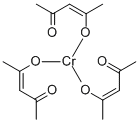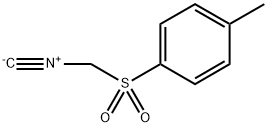COTTONSEED OIL
- CAS NO.:8001-29-4
- Empirical Formula: CH4
- Molecular Weight: 16.04246
- MDL number: MFCD00130872
- EINECS: 232-280-7
- SAFETY DATA SHEET (SDS)
- Update Date: 2024-12-18 14:08:52

What is COTTONSEED OIL?
Chemical properties
pale yellow liquid
Chemical properties
Pale yellow or bright golden yellow-colored, clear oily liquid. It is odorless, or nearly so, with a bland, nutty taste. At temperatures below 10°C particles of solid fat may separate from the oil, and at about–5 to 10°C the oil becomes solid or nearly so.If it solidifies,the oil should be remelted and thoroughly mixed before use.
The Uses of COTTONSEED OIL
Cottonseed oil is a naturally occurring vegetable oil with insecticidal properties. It was used in the analysis of a calcimine compound.
The Uses of COTTONSEED OIL
Pharmaceutic aid (solvent).
The Uses of COTTONSEED OIL
Cottonseed oil has been used as an nutritional supplement for alveolar septal wall thickness in mice. It has been used to study its effects on indirect gestational and lactational exposure in rats.
What are the applications of Application
Cottonseed oil is a naturally occurring vegetable oil with insecticidal properties
Production Methods
Cottonseed oil is the refined fixed oil obtained from the seed of cultivated varieties of Gossypium hirsutum Linne or of other species of Gossypium (Fam. Malvaceae). The seeds contain about 15% oil. The testae of the seeds are first separated and the kernels are then exposed to powerful expression in a hydraulic press. The crude oil thus obtained has a bright red or blackish-red color and requires purification before it is suitable for food or pharmaceutical purposes.
Cottonseed oil is refined by treatment with diluted alkali to neutralize acids, decolorized with fuller’s earth or activated carbon, deodorized with steam under reduced pressure, and chilled to separate glycerides and resinous substances of higher melting point.
Definition
Extractives and their physically modified derivatives. It consists primarily of the glycerides of the fatty acids linoleic, oleic and palmitic.
General Description
Odorless colorless to pale-yellow liquid. Less dense than water and insoluble in water. Hence floats on water. Freezing point 32°F. Contains principally the glycerides of palmitic, oleic and linoleic acids.
Air & Water Reactions
Insoluble in water.
Reactivity Profile
COTTONSEED OIL is sensitive to heat and light.
Health Hazard
None; is used as a food.
Fire Hazard
COTTONSEED OIL is combustible.
Pharmaceutical Applications
Cottonseed oil is used in pharmaceutical formulations primarily as a solvent for intramuscular injections. It has been used in intravenous emulsions as a fat source in parenteral nutrition regimens, although its use for this purpose has been superseded by soybean oil emulsions. It has also been used as an adjuvant in cholecystography and as a pediculicide and acaricide. It has the nutritive and emollient properties of fixed vegetable oils. By virtue of its high content of unsaturated acid glycerides (especially linoleic acid), it is used for dietary control of blood cholesterol levels in the prophylaxis and treatment of atherosclerosis. It is used as a solvent and vehicle for injections; as an emollient vehicle for other medications; and orally as a mild cathartic (in a dose of 30mL or more). It can also retard gastric secretion and motility, and increase caloric intake. It has been used in the manufacture of soaps, oleomargarine, lard substitutes, glycerin, lubricants, and cosmetics.
Cottonseed oil has been used as a tablet binder for acetaminophen; for characterization of the hot-melt fluid bed coating process;(1) in the manufacturing of stable oral pharmaceutical powders; in encapsulation of enzymes; and as an aqueous dispersion in pharmaceutical coating.
Safety Profile
Questionable carcinogen with experimental tumorigenic data. Experimental teratogenic effects. An allergen. Combustible liquid when exposed to heat or flame. However, if allowed to impregnate rags or oily waste, it can become a dangerous hazard due to spontaneous heating. To fight fire, use COa, dry chemical.
Safety
Cottonseed oil emulsions have in the past been used in long-term intravenous nutrition regimens. A complex of adverse reactions,called the ‘overloading syndrome’has been seen with chronic administration of cottonseed oil emulsion. This consisted of anorexia,nausea,abdominal pain,headache,fever,and sorethroat. Signs of impaired liver function, anemia, hepatosplenomegaly, thrombocytopenia, and spontaneous hemorrhage due to delayed blood clotting have been reported. For parenteral nutrition purposes, cottonseed oil has been replaced by soybean oil,especially in pregnant women, where the use of cottonseed lipid emulsion has been associated with adverse effects.
A notable difference between the cottonseed oil emulsion and the soybean oil emulsion is the particle size.The cottonseed oil emulsion has much larger particles than the soybean oil emulsion. These larger particles may have been handled differently by the body, thus perhaps accounting for some of the toxic reactions.
storage
Cottonseed oil is stable if stored in a well-filled, airtight, lightresistant container in a cool, dry place. Avoid exposure to excessive heat.
Regulatory Status
Included in the FDA Inactive Ingredients Database (IM injections, oral, capsule, tablet and sublingual preparations). Included in the Canadian List of Acceptable Non-medicinal Ingredients.
Properties of COTTONSEED OIL
| Density | 0.91 |
| refractive index | n |
| Flash point: | 113 °C |
| storage temp. | 2-8°C |
| solubility | Slightly soluble in ethanol (95%); miscible with carbon disulfide, chloroform, ether, hexane, and petroleum ether. |
| form | Oil |
| color | Yellow |
| Odor | at 100.00?%. bland |
| Dielectric constant | 1.3-1.4(0.0℃) |
| Stability: | Stable. Combustible. Incompatible with strong oxidizing agents. Heat and light sensitive. |
| EPA Substance Registry System | Cottonseed oil (8001-29-4) |
Safety information for COTTONSEED OIL
Computed Descriptors for COTTONSEED OIL
COTTONSEED OIL manufacturer
New Products
4-Fluorophenylacetic acid 4-Methylphenylacetic acid N-Boc-D-alaninol N-BOC-D/L-ALANINOL Tert-butyl bis(2-chloroethyl)carbamate 3-Morpholino-1-(4-nitrophenyl)-5,6-dihydropyridin- 2(1H)-one Furan-2,5-Dicarboxylic Acid Tropic acid S-2-CHLORO PROPIONIC ACID ETHYL ISOCYANOACETATE 2-Bromo-1,3-Bis(Dimethylamino)Trimethinium Hexafluorophosphate (6-METHYL-[1,3]DITHIOLO[4,5-b]QUINOXALIN-2-ONE INDAZOLE-3-CARBOXYLIC ACID 4-IODO BENZOIC ACID (2-Hydroxyphenyl)acetonitrile 4-Bromopyrazole 5,6-Dimethoxyindanone 2-(Cyanocyclohexyl)acetic acid 4-methoxy-3,5-dinitropyridine 2-aminopropyl benzoate hydrochloride 1-(4-(aminomethyl)benzyl)urea hydrochloride diethyl 2-(2-((tertbutoxycarbonyl)amino) ethyl)malonate tert-butyl 4- (ureidomethyl)benzylcarbamate Ethyl-2-chloro((4-methoxyphenyl)hydrazono)acetateRelated products of tetrahydrofuran








You may like
-
 Cottonseed oil, equivalent to analytical standard CAS 8001-29-4View Details
Cottonseed oil, equivalent to analytical standard CAS 8001-29-4View Details
8001-29-4 -
 Cottonseed oil CAS 8001-29-4View Details
Cottonseed oil CAS 8001-29-4View Details
8001-29-4 -
 Cottonseed oil CAS 8001-29-4View Details
Cottonseed oil CAS 8001-29-4View Details
8001-29-4 -
 1975-50-4 98%View Details
1975-50-4 98%View Details
1975-50-4 -
 2-HYDROXY BENZYL ALCOHOL 98%View Details
2-HYDROXY BENZYL ALCOHOL 98%View Details
90-01-7 -
 2-Chloro-1,3-Bis(Dimethylamino)Trimethinium Hexafluorophosphate 221615-75-4 98%View Details
2-Chloro-1,3-Bis(Dimethylamino)Trimethinium Hexafluorophosphate 221615-75-4 98%View Details
221615-75-4 -
 14714-50-2 (2-Hydroxyphenyl)acetonitrile 98+View Details
14714-50-2 (2-Hydroxyphenyl)acetonitrile 98+View Details
14714-50-2 -
 118753-70-1 98+View Details
118753-70-1 98+View Details
118753-70-1